ABOUT US

THE PATRONESS
THE PATRONESS: OUR LADY OF REMEDIES
(NUESTRA SEÑORA DE LOS REMEDIOS)
Kevin McHugh, MSSC
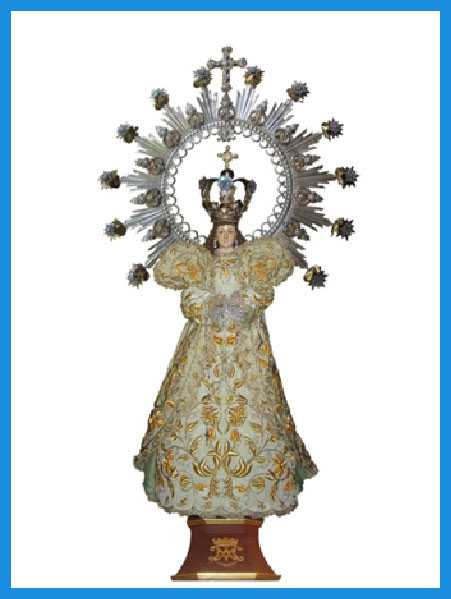 Around 800 years ago, Christians in Europe were being captured and sold into slavery by the thousands. Nobody knew what to do about this problem until a Frenchman, John of Matha, came up with a solution.
Around 800 years ago, Christians in Europe were being captured and sold into slavery by the thousands. Nobody knew what to do about this problem until a Frenchman, John of Matha, came up with a solution.
With Felix of Valois (later canonized), he founded the Trinitarian Order which received Papal approval in 1198 and whose principal mission would be to go to the slave markets, buy the Christian slaves, and set them free. To do this, they needed large amounts of money so they placed their fund-raising efforts under the patronage of Mary. In gratitude for her assistance, John (later canonized) honored Mary with the title Our Lady of Good Remedy. She is often depicted in the act of handing a bag of money to St. John of Matha. The Church celebrates her feast day on October 8.
SPAIN
It seems that devotion to Our Lady of Good Remedy was carried by sea from the region of Provence, in the south of France, to the region of Andalucia on the southern coast of Spain. Several churches dedicated to Nuestra Señora de los Remedios still exist in the area surrounding Malaga, in the region of Asturias and as far away as the Canary Islands.
MEXICO
From Spain, devotion to Our Lady of Remedies spread to the New World. In 1519 (two years before the arrival of Magellan in the Philippines), Spanish soldiers, led by Herman Cortez, landed in Mexico. There they encountered peoples from advanced cultures, the Mayans and the Aztecs, who had flourishing cities and over the centuries had constructed earthen pyramids. The one at Cholula, south of Mexico City, is larger than any of the famous pyramids that the Indians had built their temples in which they worshipped the Aztec god, Quetzalcoatl.
Cortez and his men set out to subjugate the Indians, killing those who would not accept Spanish rule (conservative estimates put the number at around 150,000) and systematically destroying the pagan shrines. They pillaged the great 20- hectare temple to Quetzalcoatl, and placed a doll-sized wooden statuette of the Virgen de los Remedios on the altar. On the night of July 20, 1520, the enraged Aztecs drove the Conquistadors from the town. The latter attributed their escape to the protection of Our Lady.
Around 1575, on top of the Great Pyramid, once the centerpiece of Aztec pilgrimages at Cholula, the Spaniards constructed a church and dedicated it to Our Lady of Remedies. Every year during the first week of September, thousands of pilgrims come from all over Mexico to visit this shrine at the church of San Bartolome Naucalpan where the authentic image is kept in a glass-covered niche.
For many, she became a substitute for the Aztec mother goddess. In the words of Victor Turner, a world famous anthropologist, “…the Virgen de los Remedios, once the symbol of Spain, has become more indigenous, more Indianized than the Virgin of Guadalupe”.
CENTRAL AND SOUTH AMERICA
As the Spanish conquistadors pushed their way into Central and South America, they brought with them their Catholic faith. At the present time, churches dedicated to Nuestra Señora de los Remedios can be found in the Dominican Republic, Bolivia, and Argentina.
SRI LANKA
History records that in the year 1544, Portuguese missionaries came to Jaffna, in the northern part of Sri Lanka. They built a church in Pandateruppu and placed in it the statue of Our Lady of Remedies which they had brought with them. Many years later, during the Dutch persecution of Catholics, the people of Sillalai hid this statue so that it would not be destroyed.
In 1687, a cholera epidemic swept through Sillalai, but when Fr. (now blessed) Joseph Vaz and other dying villagers appealed to Our Lady, they were miraculously cured. She is also popularly venerated as “Kathirai Chelvee” on account of the portrait of Mary seated on a chair with the child Jesus on her lap.
INDIA
In India, several churches and schools are dedicated to Our Lady of Remedy. In Vailankanni in the South, there is a famous Marian Shrine dedicated to Our Lady of Good Health. On February 11, 2002, it hosted the celebration of the 10th World Day of the Sick. On that occasion, Pope John Paul II, wrote:
“Sure of the Divine Mother’s unfailing help in their needs, with profound devotion and trust, millions flock to this Shrine…. Vailankanni, known as the ‘Lourdes of the East’, attracts not only Christian pilgrims but also many followers of other religions, especially Hindus, who see in Our Lady of Good Health the caring and compassionate Mother of suffering humanity”.
PHILIPPINES
.jpg) Of the 17 listed churches in the Philippines honoring Mary with the title “Nuestra Señora de los Remedios”, Malate, the oldest, was established by the Augustinian friars on September 8, 1588. The image of the Virgen de los Remedios was brought from Spain to Malate by Friar Juan de Guevara, OSA, in 1624.
Of the 17 listed churches in the Philippines honoring Mary with the title “Nuestra Señora de los Remedios”, Malate, the oldest, was established by the Augustinian friars on September 8, 1588. The image of the Virgen de los Remedios was brought from Spain to Malate by Friar Juan de Guevara, OSA, in 1624.
It survived the Chinese invasion of 1662, the British occupation of the church in 1762, the Great Earthquake of 1863 and the destruction of the church in February, 1945. From that time onwards, the faithful have displayed a great love and devotion to Our Lady of Remedies. The present statue, which is very graceful in its lines and though small (about two feet in height), has a very distinctive beauty. The costume, with large puffed shoulders, may have been the origin of the butterfly sleeves of the Filipino terno.
Down through the centuries, Malate Church has been associated with women’s ills and children’s diseases. On Saturdays, mothers bring their little ones to place them under the care and protection of Nuestra Señora de los Remedios. Such was the fame of the Malate Shrine that replicas of the image spread to the provinces. In Pangasinan, she is venerated as of the “Virgin of Malate”. In Pampanga, an image of the Virgin of Remedies is brought to various parishes of the province in the course of the year and is hailed as the “Queen of the Pampangeños.”
HISTORY OF THE NOVENA TEXT
The Novena to Our Lady of Remedies used in Malate since 1965 is the English translation of the original written in Spanish by Don Francisco de Gonora. It has helped several generations of Malateños appreciate the special place that Mary has in our lives.
To allow for changes in language usage and to include the insights of Vatican II, a revised text was prepared to celebrate the New Millennium. Preserved (with some editing) are the Introduction and the Daily Novena Prayer. Key moments in the life of Our Lady, as related in the Bible, are revealed to us over the nine days.
Our Lady of Good Remedy, Patroness of the Trinitarians
Perhaps we, in Malate, could make our own the words addressed by Pope John Paul II to the 2001 General Chapter of the Order of the Most Holy Trinity. “May the Blessed Virgin Mary, venerated by your Order under the lovely title of Our Lady of Good Remedy, protect and guide you in your journey towards holiness.”


THE CHURCH
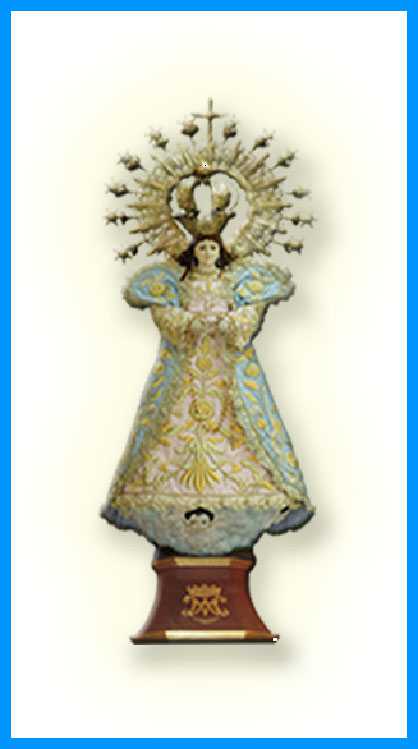 THE MALATE CATHOLIC CHURCH
THE MALATE CATHOLIC CHURCH
In 1588, in this village known as Malate, the Augustinian friars built a church in honor of Nuestra Señora de los Remedios. The stone church and convent, built in 1591, suffered heavily during the earthquake of 1645 and 1863, while both buildings were pulled down in 1667 on orders of Governor General Manrique de Lara, who feared an invasion by the pirate Koxinga. But the Sino corsair died in Formosa or Taiwan just before the invasion, and the church was rebuilt later that year, and during the next three years, with with the use of the same stones and bricks.
When the British landed in Manila in 1762, they made the church their headquarters. Repairs had to be made after the British left the following year. But both church and convent were destroyed beyond repair by the typhoon of June 1868.
The present church was then rebuilt for the third time in its entirety, thanks to the parish priest, Fr. Francisco Cuadrado, who, together with the poor fishermen of his parish, toured the city and nearby provinces to raise the much-needed funds. The upper façade of the church was completed three decades later, from 1894 to 1898.
The Japanese occupation proved disastrous to the church in Malate. Both church and the convent were burned, with just the walls left standing. Fortunately, the Columban fathers rebuilt the roof, the main altar, the dome and the transept around 1950, and in 1978, the interior of the church was painted, the bricks and the stones outside were made to look new. The bell to be found at the entrance of the convent bears this inscription:
“Nuestra Señora de los Remedios. Se fundio en 30 de Enero de 1879.”

The façade of the present church of Malate is a “good blending of Muslim and baroque architecture; the solid compact stone structure is enhanced by the cylindrical end buttresses, the few openings and the overall ornateness of the design. The three-story façade integrates with ingenuity the cylindrical end buttresses, hexagonal forms converted into belfries.”

MISSION AND VISION
PARISH MISSION
As we start the new millennium, we dedicate ourselves to listen to God’s Word and to allow God’s spirit, working within us, to respond to the call for Renewed Integral Evangelization.
Habang sinisimulan namin ang bagong milenyo, iniaalay namin ang aming sarili sa pakikinig sa Salita ng Diyos at hayaan ang Espiritu ng Diyos na nananatiling buhay sa amin, upang sumagot sa panawagan nang Ganap na Pagpapanibago ng Pagpapalaganap ng Mabuting Salita.
As we read the signs of the times, we commit ourselves to be responsive to the spiritual, educational, and social needs of the community in the 21st century.
Habang binabasa namin ang mga tanda ng panahon, itinalaga namin ang aming sarili na sumagot sa espiritwal, sosyal at pang-edukasyong pangangailangan ng sambayanan sa ika-21 siglo.
We encourage the active participation of everyone at all levels of parish life: Parish Pastoral Council, Ministries, Areas, and traditional organizations.
Aming hinihikayat ang aktibong pakikilahok ng bawat isa sa lahat ng bahagi ng buhay sa parokya: PPC, mga Ministry, mga Areas, at ang mga tradisyonal na organisasyon.
PARISH VISION
We envisage a parish that is open to be evangelized and empowered to evangelize and be responsive to the needs of the wider community in a participatory manner.
Aming pangarap ang isang parokya na bukas sa pagtanggap ng Mabuting Balita at may lakas sa pagbabahagi nito sa iba at sa pagsagot sa mga pangangailangan ng mas malawak na sambayanan sa paraang may lubos na pakikilahok.

THE COLUMBANS OF MALATE
THE PRIESTS OF MALATE
The Irish Redemptorists had served the people of Malate from 1912 to 1929. For years, they had pleaded with the Archbishop to find replacements so that they could concentrate on their mission work.
The Columban Fathers, mostly Irish, took over Malate Church in 1929 from the Redemptorist Fathers. The Redemptorists, whose charism lay more in reviving-type missions, had long wanted to turn over the parish to another group. The Church had been in the hands of the Spanish Augustinians for centuries. With the expulsion of many Spanish friars during the revolution, many churches were left without pastors.
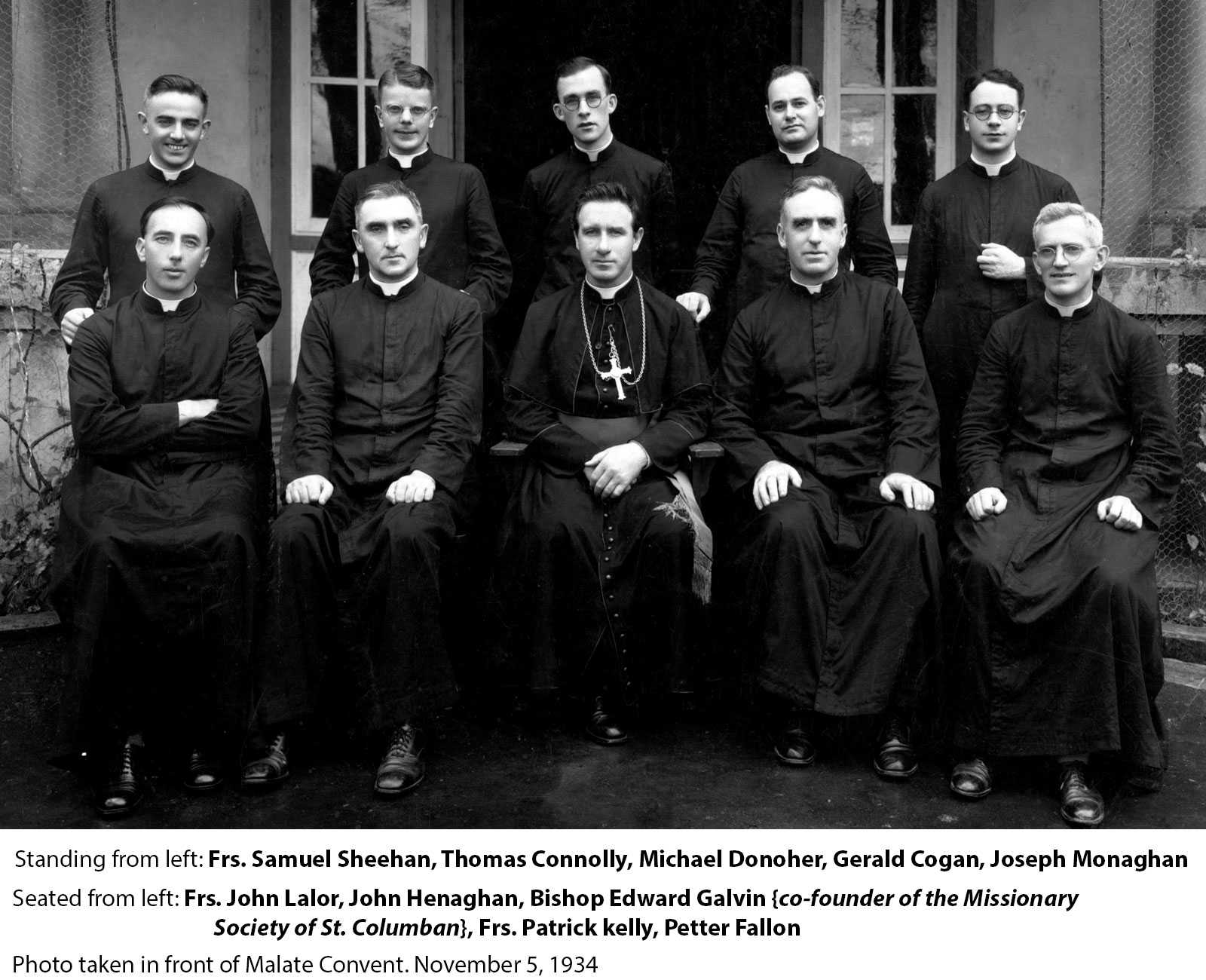
Fr. John Blowick was coming by boat from China on his way to Australia and, in God’s providence, became the first Columban to set foot in Manila. According to his diary, he was met by a kababayan, Fr. Lynch, a Redemptorist priest, who brought him to the environs of Malate on Friday, August 20, 1920. Two days later, he became the first of a long line of Columbans to celebrate Sunday Mass for the people of Malate. That afternoon he boarded the Aki Maru, bound for Melbourne, via the port of Brisbane. He was in time followed by other Columbans, as Manila was a port of call on the way to Australia or the United States, where another Columban community had taken root.
In 1928, two Columbans stopped in Manila for some rest from the increasingly troubled China mission. They decided to call on Archbishop Michael J. O’Doherty who lamented the scarcity of priests. This was soon followed by a visit by the Superior General, Fr. Michael O’Dwyer, who saw Manila as a limited commitment and an escape hatch should things go badly in China. By the end of May 1929, the first Columban priests assigned to the Philippines had arrived; Michael Cuddigan from Australia, Patrick Kelly on a boat from Genoa. They would be followed soon afterwards by Frs. Gerald Cogan, John Lalor, John Henaghan, Joseph Monaghan, Peter Fallon and Edward J. McCarthy…..
Columbans in the Philippines, though few in number, spread out from Malate to staff the parishes nearby…… By the time Fr. Blowick visited Malate, the transition was underway. Church was becoming a Sunday affair, a fiesta, a procession, a sacrament. Six days a week, body and soul belonged to commerce, the affairs of state and daily living…..
…. By the time the Columbans landed in 1929, churches in the surrounding towns were in a state of disrepair….. Malate Church shared the fate of Manila during the days of Liberation. The Japanese followed a scorched earth policy…. Six Columban priests died with their parishioners during the war. Five of them were taken by Japanese soldiers and never seen again. Out of the six, only Fr. Lalor’s body was found.
…After the war, the Columban Fathers, battered and unbowed, needed more men to help them. Priests were sent in from Ireland, America, Australia, and New Zealand. They stayed at the Malate School until they acquired a House in Singalong Street, which still serves as their headquarters today. Malate Church, the school and the convent were restored.
 The Missionary Society was named after St. Columban, a 6th-century monk from Ireland who traveled across Europe in order to spread the Christian faith. It has for its members secular priests who serve in the foreign missions. The Society was originally founded for China but the fathers eventually spread out to other countries.
The Missionary Society was named after St. Columban, a 6th-century monk from Ireland who traveled across Europe in order to spread the Christian faith. It has for its members secular priests who serve in the foreign missions. The Society was originally founded for China but the fathers eventually spread out to other countries.
Concurrently, the parish continues to grow and mature. In the tradition established by Fr. Kelly, the succession of priests assigned to the parish immersed themselves in the life of the community, spreading the Good News through witness and worship, organizing….serving the needs of the people. To this day, the Columban Fathers remain immersed in the lives of the people, especially the poor, speaking their language, walking with them, ministering to them
*Excerpts from the “Columbans- 75 Years in Malate.”

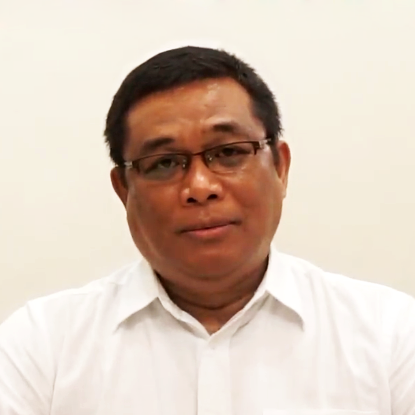 Fr. Leo Distor |
|
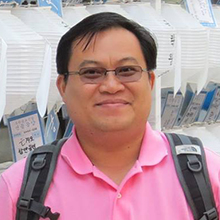 Fr. Jude Genovia |
 Fr. John Leydon |
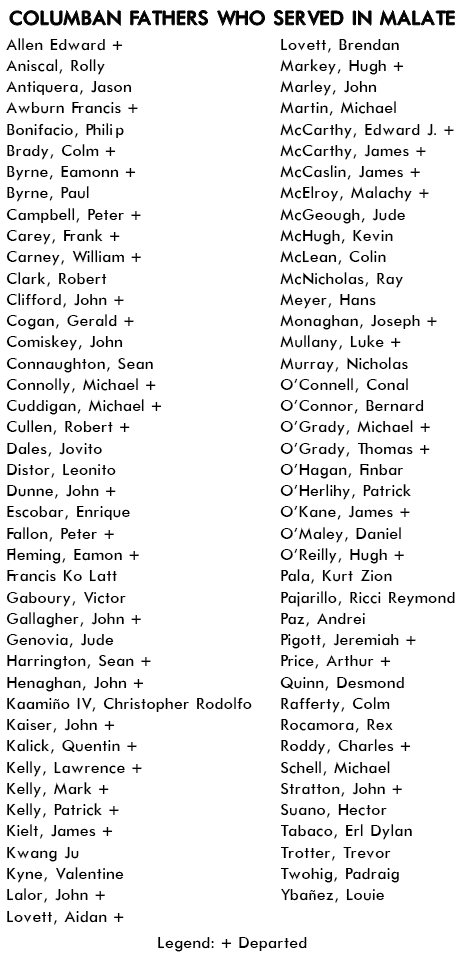
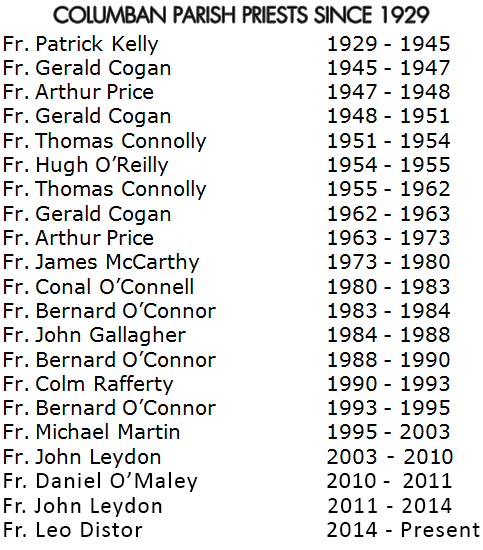



THE REMEDIOS JUBILEE MISSION CENTER (RJMC)
The Remedios Jubilee Mission Center (RJMC) is designed to enhance Malate Catholic Church, a National Historical Monument. Built in 1999, the new building mirrors the unique architecture and beauty of the old adobe Church. “Remedios,” a title of Mary, links this Church community to the coming of the Christian faith to Malate and the Philippines, some four hundred years ago. “Jubilee” marks the year of the Great Jubilee and celebrates 2000 years since the coming of the Savior. “Mission” refers to the coming of Christianity to the Philippines, and the subsequent emergence of a vibrant Filipino Church, bringing life and hope to young and old Churches around the world.
The most distinctive thing about the new building is not its architecture or its beauty, though its winning design is striking. Its uniqueness is not in providing a parochial office and residence for the priests and guests. Its allocation of space for Adult Faith Formation is in line with the thrust of the Church today, a Church inspired globally by Vatican II and locally by PCP-II (Second Plenary Council of the Philippines).

Telling the story of the Christian Faith coming IN and going OUT of the Philippines is the unique and special feature of the Remedios Jubilee Mission Center. An exceptional Visual and Audio-Visual presentation creates a Heritage Center, designed to tell the story of the Filipino Church, a story filled with passion and pain, with joy and pride. This is a story that needs to be told, especially at a time when poorer nations are frequently humiliated and their specific contribution to the whole human development project is under scrutiny, a time when the cultural identity of people is threatened in the rush towards globalization.
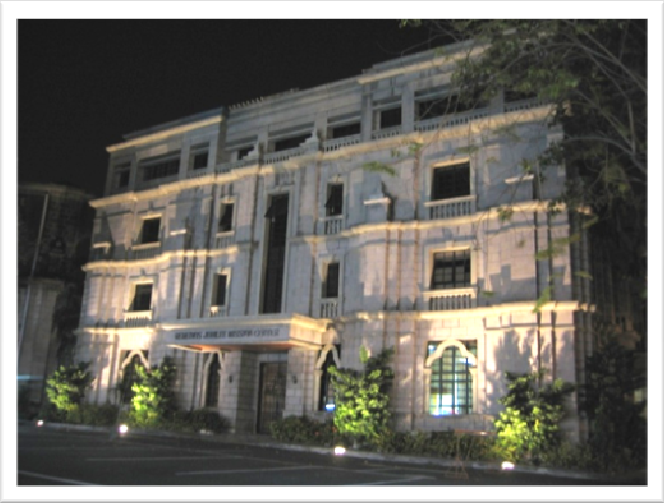 The process of constructing the building was highly participative as parishioners voted for and chose the winning design, as well as raised the money to build it. Built alongside the church, the RJMC is intended to foster community, through ongoing faith formation, fellowship and spiritual growth for parishioners to complement Eucharistic celebrations.
The process of constructing the building was highly participative as parishioners voted for and chose the winning design, as well as raised the money to build it. Built alongside the church, the RJMC is intended to foster community, through ongoing faith formation, fellowship and spiritual growth for parishioners to complement Eucharistic celebrations.
The people of Malate thank God Who inspired them, and pray that many people will benefit from this center.

THE REMEDIOS TRAINING CENTER (RTC)
 During the 1970s, the parish opened a four-storey social center – the Remedios Training Center or RTC as it is now popularly called, to provide a venue for meetings and social services, as well as vocational trainings for the needy under the direction of Fr. Arthur Price. Located at San Andres corner Madre Ignacia Streets in Malate, the RTC is a gathering place where parish organizations and concerned families respond in various ways to the medical, educational and other basic needs of the poor and transients of Malate.
During the 1970s, the parish opened a four-storey social center – the Remedios Training Center or RTC as it is now popularly called, to provide a venue for meetings and social services, as well as vocational trainings for the needy under the direction of Fr. Arthur Price. Located at San Andres corner Madre Ignacia Streets in Malate, the RTC is a gathering place where parish organizations and concerned families respond in various ways to the medical, educational and other basic needs of the poor and transients of Malate.
In the 1980s, the RTC used to house the Bahay Tuluyan, a drop-in center for street children which began as a partnership between individual initiatives and the Parish. Services were also offered to women, who in one way of another are prejudiced or exploited by the tourism industry (Magdalena). These programs have since evolved into independent centers that can be found in various parts of the metropolis.
Today, the RTC continues to be a place which serves the community. Its ground floor was renovated in 2008 to accommodate the Vicariate Health Clinic of Nuestra Señora de Guia, which has been in operation since 2006 through the services given by dedicated doctors and community volunteers.

PERPETUAL EUCHARISTIC ADORATION CHAPEL
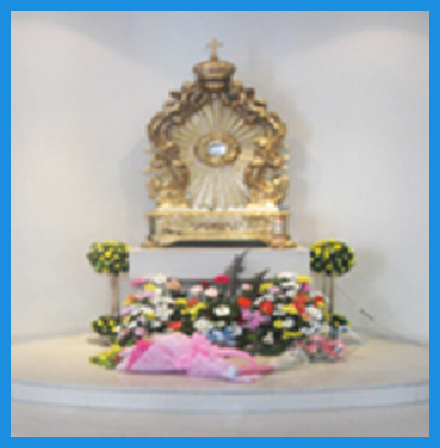
During the 1990s, the Perpetual Eucharistic Adoration Chapel was built and opened on the Mabini side of Malate Church under the leadership of Fr. Colm Rafferty. Renovated a few years ago and then again in 2007, the Chapel continues to serve the community as a place for quiet contemplation.

Gawad CCP Tanging Parangal
Missionary Society of Saint Columban
The Missionary Society of St. Columban settled in the Philippines in the early part of the 20th century with Malate Catholic Church as their first parish. Constructed by the Augustinians in 1588 as a friar building, the church is also known as Our Lady of Remedies Parish.
For over 400 years, the church has witnessed the country’s greatest geological disasters, historical upheavals, and destruction during the last world war.
In the new millennium, the church has deteriorated due to continuing threats from nature, pollution, and mindless urban development.
To save the church, the Columbans implemented the “5-5-5 March of the Thousands” fundraising campaign to raise P25 million in five years. They gained the active participation of their generous stakeholders, community residents, volunteers and parishioners.
They forged a partnership with Escuela Taller de Filipinas Foundation by employing their trained out-of-school youth graduates as conservation workers.
The Columbans showed that continuing threats to heritage buildings and sites can be overcome by people’s participation and vigilance, and with God’s compassion, and that a heritage structure is not just an old building but a living treasure.
For their unwavering implementation of the conservation/restoration project whose lessons are worth replicating all over the country, the Gawad CCP para sa Sining (Tanging Parangal) was given on the 17th of September 2015 to the Missionary Society of St. Columban.
On 17 September 2015, the Missionary Society of St. Columban was given the prestigious Gawad CCP Tanging Parangal in recognition of its heritage conservation in the restoration and preservation of Malate Church. It was a moment of pride for our priests who have been our guide and pastors, and for all of us who love this age-old yet vibrant church. Indeed, Malate Church has been the center of the lives of its parishioners and many others who have sought the care and protection of Our Lady of Remedies.
Since their arrival in the Philippines in 1929, the Missionary Society of St. Columban has served in Malate Church (also known as the Nuestra Señora de los Remedios), and more than being pastors of the community, they have become more like family to the parishioners. They have gone beyond their spiritual service to the congregation by also taking care of the church that they have called home.
The Gawad CCP Para sa Sining, which is given every three years, is awarded to artists or groups of artists who have consistently produced outstanding works and enriched the development of their art form. The award is also given to cultural workers, who through their works in research, curatorship and administration, have helped to develop and enrich Philippine art. The Tanging Parangal is given to individuals or organizations to honor their outstanding contributions to the development of the arts in the country.
ELEVEN individuals and two organizations received the Gawad CCP Para sa Sining for their outstanding achievements and contributions to Philippine arts and culture on September 17, 2015 at the Cultural Center of the Philippines Tanghalang Nicanor Abelardo.
The Gawad CCP Para sa Sining is the highest award given by the CCP. For 2015, the award was conferred on Denisa Reyes for Dance; Fides Cuyugan Asensio for Music; Antonio Mabesa for Theater; Roberto Chabet for Visual Arts; Ricardo Lee for Literature; Nora Villamayor a.k.a. Nora Aunor for Film and Broadcast Arts; Paulo Alcazaren for Architecture; Ben Farrales for Design; Leoncio Deriada, Talaandig School of Living Traditions, Armida Siguion-Reyna, and Basilio Esteban Villaruz. The Missionary Society of St. Columban received the Tanging Parangal.
Acknowledgment goes to CCP Press Release July 14, 2015.
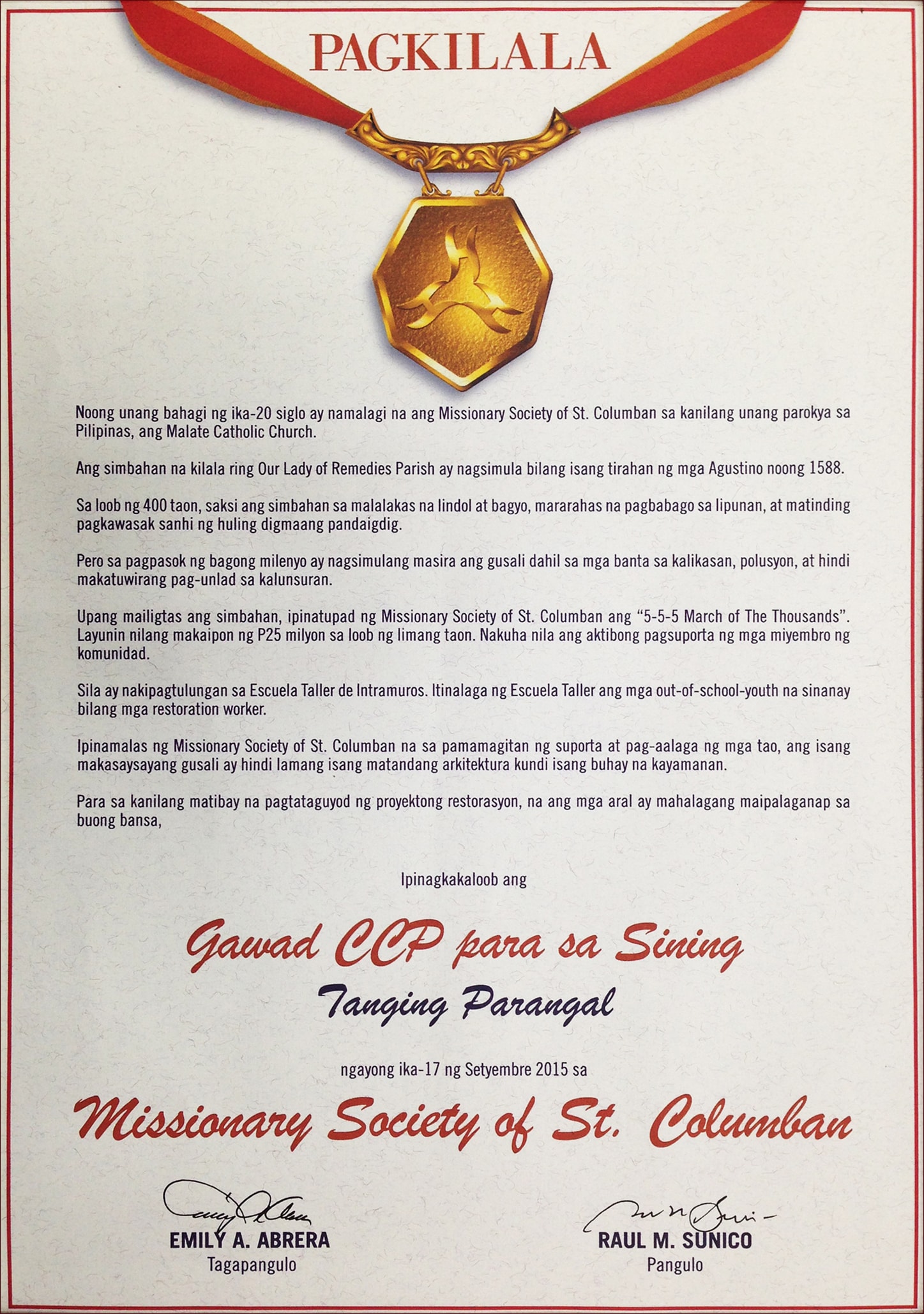

The Parish Pastoral Council
The primary body in charge of planning and implementing the various programs in the Parish. With the Parish priest as its head, together with the PPC officers, heads of the Ministries, the Areas, and the Organizations (MAOs), the Council links the entire volunteer corps to the Parish by coordinating its different activities, cascading information and encouraging active involvement in all parish-related endeavors.
PPC Secretariat
This unit of the PPC, composed of the Parish Priest, the Coordinator of the Parish Council, the Vice-Coordinator, the Secretary, the Treasurer and the Coordinators of the Ministries-Worship, Education, and Social Service, which initially prepares and formulates plans and programs for the consideration by the Parish Council. This group meets before the PPC monthly meeting to discuss the agenda for the upcoming meeting and other matters that need to be brought to the attention of the Council.

Ministries, Areas and Organizations
Ministries
Areas
About Malate Catholic Church
© Malate Catholic Church
All rights reserved.